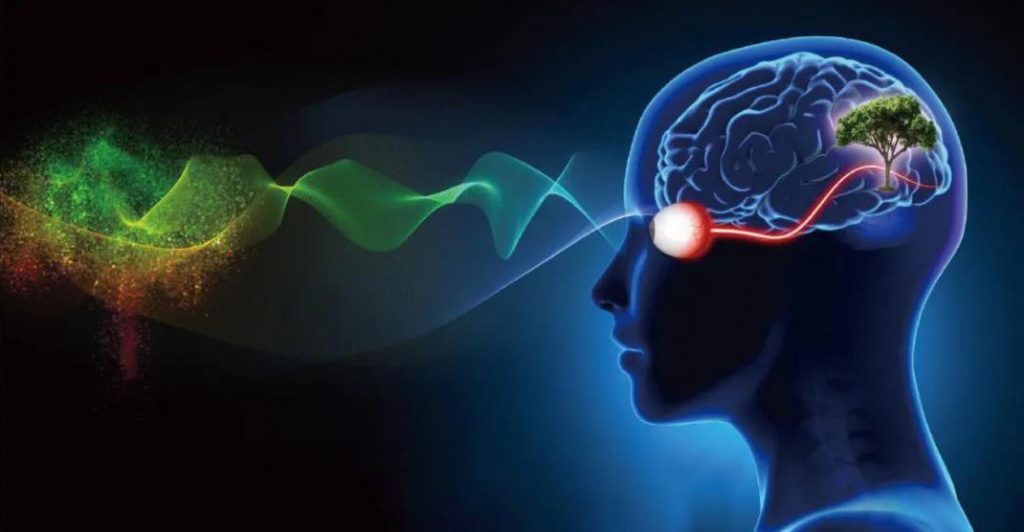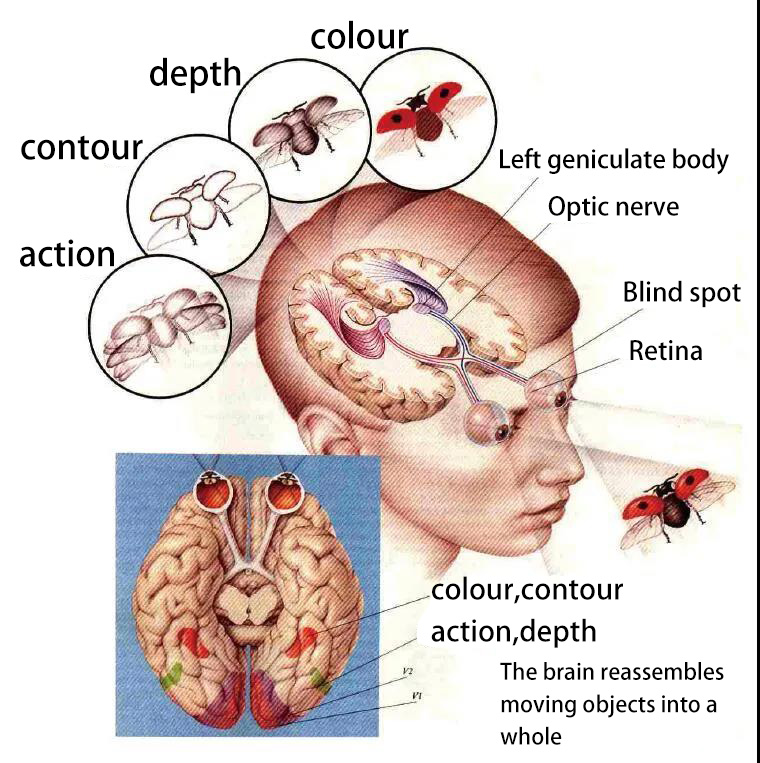
You can’t shake your hands when you take a photo. The photos you take with a little shake will blur out immediately, but even if you turn your eyes left and right now, you can still see the words clearly. Why is the “camera” of the eyes so “anti-shake”?
When I encountered a problem with homework, I turned the pen in my hand when I was thinking, accidentally threw the pen out, and looked for the direction of the fall that my eyes could see, but I couldn’t find it, but when I turned around, it appeared.
You are in a completely different direction from what you are seeing. Why is that? It turns out that this is all because the brain “lied” the eyes!
Super anti-shake “camera”
If you ask you, what makes you see this colorful world? You must not hesitate to say that it is the eyes.
In fact, the answer is only half right, because the eyes are not enough to see, and the brain also plays an indispensable role in this process.

Light enters our eyes and eventually converges on the retina. Here, light will activate the photoreceptor cells one by one, and objects of various colors, shapes and sizes will produce different electric sparks in the cells.
These electrical signals are transmitted to the brain through the optic nerve, where they are reorganized in the visual cortex and “translated” into the image we see.
The process of reorganization and translation is completely completed by the brain, so at this stage, the brain has the opportunity to “deceive” the eyes.
When our eyeball moves, because the light travels in a straight line, the angle and intensity of the light emitted or reflected by the eyeball will change.
This is why the picture will be blurred when we take a picture. But the objects we see in the end are almost unchanged. This is obviously inconsistent with optical knowledge.
Why? Pola Binda and Maria Moron, professors of ophthalmology at the University of Pisa in Italy, believe that this is the brain predicting what you will see and “translating” its image.
In experiments conducted by Binda and others, they showed the macaques some fast-moving objects, including their interesting food bananas. The speed of these objects is gradually accelerated to train the macaque’s ability to scan quickly.
In the experiment, the researchers used an EEG to track the process of a complete neuron transmitting and receiving electrical signals from the retina to the visual cortex to study the visual process of the macaque.
Researchers have found that when the macaque moves its eyeballs following the movement of the object, the brain cells have already received the electrical signals caused by the moving object.
In other words, even if the macaque does not move its eyeballs following the object, it has already “seen” the moving object in advance.
So, how do these brain cells “see” the upcoming objects in advance? The answer is based on what we saw before. After the macaque glances at an object quickly, an impression will be left in its mind, and then when the object is seen, the same electrical signal will be generated, and the two electrical signals will merge into the same image.
In this way, even if the object is moving, the images in the brain will automatically merge, so we can see fast-moving objects without blurring.
However, the fusion time of the two electrical signals is very short. According to Binda’s research results, two identical stimuli with an interval of 50-100 milliseconds can be merged into the same image by the brain, otherwise it will be briefly “a piece of brain” blank”.
This is likely to happen in humans. Binda believes that before the brain sends a command to rotate the eyeball, it will send a signal to the “pre-vision zone”.
This signal will make the retinal cells based on the previously seen image. “Complete” the unseen images. In other words, the brain will first “occupy a place” with the image it has seen before, and then “complement” the real image when the eye actually sees the object.
This discovery has actually been used by humans. When we did not have flash (software for making animation) technology, illustrators would draw many very similar pictures, and then quickly play these pictures in a very short period of time, so that we can see things on the pictures as if ” This is the principle of animation.
It uses the “loophole” of our brain to merge fast-moving objects into one to deceive our eyes.
The disappearing pen
The “deception” of the brain allows us to see the moving objects clearly, which does bring us great benefits, but sometimes it also gives us wrong information, such as a pen that can’t be found when it falls on the ground. It is the side effect of brain deception.
As mentioned earlier, the brain will merge two similar images within 50-100 milliseconds into one.
This time is already very short, right? However, this time is still too long compared to a pen that disappears all at once.
In order to maintain its “authority” and direct other parts of the body to react, the brain predicts the trajectory of the object on its own. However, in the end, it made a mistake.

In 2016, Jason Fisher, a brain neuroscientist at the Massachusetts Institute of Technology in the United States, and his team did a series of experiments to let the brain “foresee” things.
One of them was to do so. The researchers observed the subjects. They arranged a circle of light spots that flashed in sequence, and monitored their brain activity with an EEG device.
After repeating the experiment many times, the subject’s brain learned to predict the time and sequence of the occurrence of these dots, that is, it can “foresee” that it will light up before the next dot flashes, with a time interval of only 15 milliseconds about.
But at this time, the researchers began to “play” with the brain. They changed the rules of light flashing, and suddenly stopped the flashing cycle, and the light no longer lit up.
It was found that the subject still said that he “saw” the subsequent light spots flashing in sequence, and then the light spots disappeared.
In another parallel experiment, the researchers changed the rule to change the blinking direction of the light spot, that is, from clockwise blinking to counterclockwise.
This time, the brain still performs the wrong prediction first, and the subject “sees” the light spot flashing in a clockwise direction.
Soon, the brain realizes that an error has occurred, and it immediately corrects its cognitive style: it directly erases the previous prediction information, as if it had never made a mistake. The subject said that the light spot that seemed to have disappeared completely, and the new light spot started to light up in a counterclockwise direction.
Based on this, we can speculate that when looking for a pen that flew out, the brain also predicted the movement trajectory of the pen out of the field of view according to the direction of movement before the pen disappeared, but because there is no follow-up information, the brain cannot judge whether its prediction is There is an error, so we will think that the pen flew out in the direction predicted by the brain before, until we find that the actual situation is different, we will suddenly realize that the brain is not always right.
To see the world clearly, the brain and the eyes are indispensable, and sometimes the brain will kindly “deceive” our eyes and “foresee” things that we haven’t seen clearly or seen. It seems that seeing it in the future is not necessarily true.
Comments